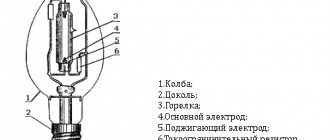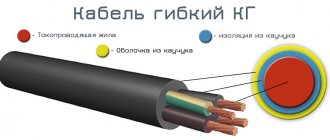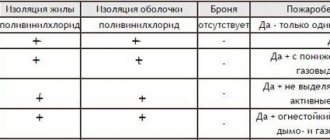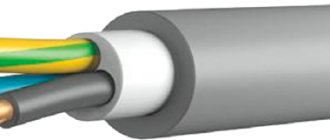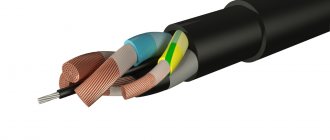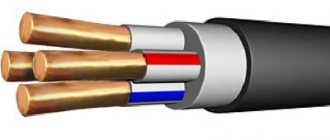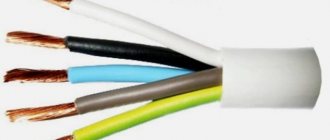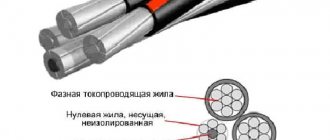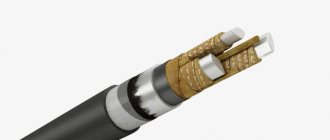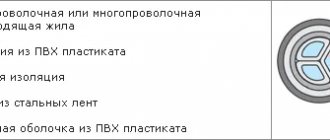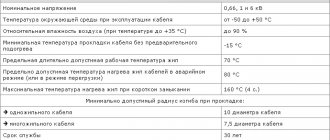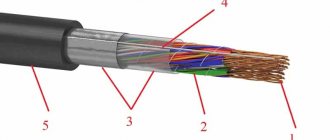Low and high pressure mercury gas discharge lamps of various modifications are used everywhere today. They are installed on the streets and roads of populated areas, perform the functions of architectural lighting, illuminate train stations, markets, highway overpasses, bridges and many other objects.
Low-pressure mercury lamps illuminate the buildings of schools, hospitals, kindergartens, administrative buildings, and shopping malls. They are popular in the housing and communal services sector for lighting entrances, basements, strollers and utility rooms. Powerful devices are installed in courtyards and playgrounds. Categories of narrow focus lamps are used for medical, forensic, agricultural livestock purposes and help in bird breeding.
Despite the disadvantages, mercury devices also have a number of advantages. Until some time, they were the most economical and reliable for consumers of different levels. But scientific developments and their improvement are constantly moving forward. And now, mercury-based devices are being replaced in orderly rows by sodium and LED lamps of the new generation. In the meantime, 70% of the space around us is illuminated by gas-discharge lamps.
DRL lamps.
The DRL lamp is an electric gas-discharge lighting device for artificial lighting. The abbreviation stands for Mercury Arc Lamps. The term “mercury lamp” or “RL” is generally recognized. It is used in technical documentation.
- D – arc.
- R – mercury.
- L – phosphor (light source).
The physical principle of operation is an electrical discharge in mercury vapor.
The marking also includes a number indicating power. For example, DRL-250 - 250 Watt, Mercury Arc Lamp.
In the USSR and Russia, there are regulatory documents for the manufacture of mercury illuminators GOST 27682-88 and 53074-2008.
Review of existing species
High-pressure gas-discharge light sources, which include DRL arc lamps, are divided into two main groups: general and highly specialized. The first option is installed in a street lighting fixture. The second group of high-pressure light sources is used in medicine, certain industries, and agriculture.
In addition, gas-discharge lamps are divided into types in accordance with structural and functional differences. Power range: from 80 to 1,000 W. More powerful versions are used more often: 100 W, 250 W, 400 W, etc. Moreover, there is a division according to the number of electrodes: two-electrode (power from 80 to 1,000 W); four-electrode (250 -1,000 W).
Types of DRL lamps
This type of illuminant is classified by the vapor pressure inside the burner:
- Low pressure - RLND, no more than 100 Pa.
- High pressure - RLVD, about 100 kPa.
- Ultra-high pressure - RLSVP, about 1 MPa.
DRL has several varieties:
- DRI – Arc Mercury with radiating additives. The only difference is in the materials used and gas filling.
- DRIZ – DRI with the addition of a mirror layer.
- DRSh – Arc Mercury Ball.
- DRT – Arc Mercury Tubular.
- PRK – Direct Mercury-Quartz.
Western markings are different from Russian ones. This type is marked as QE (if you follow ILCOS - generally accepted international marking), by the following part you can recognize the manufacturer:
HSB\HSL – Sylvania,
HPL – Philips,
HRL – Radium,
MBF – GE,
HQL - Osram.
Comparison of DRL light bulbs with analogues
Discharge lamps are often compared with each other and with more profitable LEDs. The closest analogues of DRL are three types of illuminators: DRI, DRI and DNAT. Let's try to identify the features and competitive advantages of different light bulbs.
DRV. A mercury-tungsten arc lamp is very similar in design and operating principle to a DRL. Structurally, inside the flask there is a mercury discharge torch and a tungsten spiral. The last element limits the current for the burner, which means that additional ballasts are not needed.
The main differences between mercury-tungsten lamps and DRLs:
- They consume more electricity - the luminous flux of DRV 250 is no more than 5500 Lm;
- estimated operating time – 3000 hours;
- lights up within 1 minute.
DRI. Mercury arc lamps with emitting additives: indium, sodium, thalium halide, etc. Metal components increase the light output of devices to 75-90 Lm/W.
An additional advantage of metal halide mercury lamps is improved color rendering. To operate DRI, like DRL, they require connection via a choke
DNAT. Sodium arc lamps boast the highest light output and longest operating life among discharge illuminators. The performance of sodium light bulbs does not decrease as noticeably over time as DRL lamps.
Characteristics of DNAT:
- maximum light output – 125 Lm/W;
- operability – within 20 thousand hours;
- relative stability of parameters;
- wide range of operating temperatures;
- reaching maximum illumination in 5-7 minutes.
Disadvantages of sodium light sources: significant pulsation and low color rendering coefficient, Ra=25. The emission spectrum is dominated by red and yellow colors.
Discharge lamps are confidently giving way to LED options. LED devices are superior to their predecessors in all technical and operational parameters.
The undeniable advantages of LEDs: environmental friendliness, minimal pulsation, service life, instant switching, excellent color reproduction and contrast. In addition to excellent performance characteristics, diode devices have temperature and mechanical resistance.
The efficiency of LED lamps is unrivaled, operating efficiency reaches 95-98%. The main factor somewhat constraining the re-equipment of lamps is the high price of LED lamps
Operating principle and connection diagrams of DRL
The connection diagram for a two-electrode DRL is not discussed in the article, since this type of lamp is obsolete and is no longer produced.
The schematic diagram shows:
EL – DRL.
C – capacitor (not a mandatory element).
LL – choke (inductor).
FU – fuse.
When voltage is applied, gas ionization occurs between pairs of main and ignition electrodes. Since they are located in close proximity, ionization of the gas occurs easily between them. After ionization of the gas, a breakdown occurs between the main electrodes - an arc discharge is formed. The light from the discharge itself has a blue or violet tint.
The phosphor itself gives a reddish tint, thus mixing primary colors and producing cool white light. The visible shade may vary slightly depending on the applied voltage.
The discharge in the burner gains brightness within seven to eight minutes. This is due to the fact that initially mercury is in the form of a ball in a liquid state. As the temperature rises, the mercury gradually evaporates and the discharge improves. As soon as the liquid metal completely transforms into a vapor state, the brightness will reach its maximum. At the same time, the pressure also increases. Maximum brightness is achieved in ten to fifteen minutes. The ambient temperature affects the time it takes for the light source to return to normal mode.
The choke is necessary, it is the simplest ballast - ballast. It also limits the current passing through the electrodes. If a DRL lamp is connected directly to the network, then its failure is inevitable. Usually this happens instantly. The polarity of the inductor connection does not play any role. Its main purpose is to stabilize the operation of the illuminator.
The selection of a choke for a specific DRL lamp is discussed in the table
| DRL 125 W | DRL 250 W | DRL 400 W | DRL 700 W | |
| Rated choke current (ballast) | In=1.15 A | In = 2.15 A | In = 3.25 A | In = 5.45 A |
Selection of a specific inductor by current
You can study the design and operating principle of the throttle in detail here
The capacitor used is selected based on the power of the lamp. Recommendations are presented in the table.
| DRL lamp type | Capacitor capacity |
| DRL-125 1.15 A | 12uF |
| DRL-250 2.15 A | 18uF |
| DRL-400 3.25 A | 25uF |
| DRL-700 5.25 A | 40uF |
With the current development of electronics, the choke is an archaic element. Electronic arc stabilization units can now be found on sale. These devices can withstand the precise power conditions required to start and maintain combustion, regardless of changes in voltage in the lighting network.
If you cannot purchase electronic ballast, you can make it yourself. Here Ф is phase, 0 is zero.
Advantages and disadvantages
Sodium lamps are still actively used despite strong competition from LEDs. The reason for this is the following advantages of these devices:
- impressive service life;
- high light output;
- light spectrum comfortable for human vision;
- multifunctionality and versatility of application;
- high efficiency.
However, there are a number of disadvantages due to which HPS devices are inferior to competitors:
- difficulty of installation and connection for non-professionals;
- long warm-up time;
- strong heating of the tube;
- extraneous sound during operation;
- explosion hazard;
- presence of heavy metals.
Some types of sodium appliances are not environmentally friendly because the sodium amalgam used in them is a chemical compound of mercury and sodium. In addition, at low temperatures, the efficiency of HPS decreases.
Scope of application
DRLs are designed for lighting large areas. They are usually used in street lighting, gas stations, and roads. They are often used in warehouses. Those. where high quality color rendering is not needed.
They are not used for permanent use in residential premises. This is explained by the low color rendering coefficient and the long time to reach normal mode. At home, at a minimum, it is inconvenient to wait about ten minutes after clicking the switch.
Very often they are found in lighting installations for exhibition complexes. Here their advantages are fully revealed - the maximum power can be 1 kW, while the luminous flux reaches 52,000 lumens. Their glow is usually the same color - 5500 Kelvin.
Reviewers and author
Reviewers:
Artyom Balabanov, electronics engineer, developer of UV curing systems;
Rumen Vasilev, Ph.D., lighting engineer, OOD "Interlux", Bulgaria; Vadim Grigorov, biophysicist; Stanislav Lermontov, lighting engineer, Complex Systems LLC; Alexey Pankrashkin, Ph.D., Associate Professor, semiconductor lighting engineering and photonics, INTECH Engineering LLC; Andrey Khramov, specialist in lighting design for medical institutions; Vitaly Tsvirko, head of the lighting engineering testing laboratory "CSOT NAS of Belarus" Author:
Anton Sharakshane, Ph.D., lighting engineer and biophysicist, First Moscow State Medical University named after. THEM. Sechenov
Links
Disposal
The lighting devices in question are classified as hazard class 1. Therefore, the number of places where these are prohibited for use is now growing. It is possible that in a few years mercury lamps will be phased out everywhere, as government policies are aimed at reducing the amount of equipment containing mercury. In compliance with government orders, utilities are reducing their use of DRLs.
Unfortunately, not everyone thinks about the issues of decommissioning such light sources. By doing this, they harm not only themselves, but also those around them .
Soon their sale will be completely stopped. Devices containing mercury will be left only in medical equipment until a safe analogue is found.
Currently, recycling of mercury lamps is a licensed service. On September 3, 2010, a corresponding decree of the Russian government was adopted. The document describes the requirements for the disposal process and contains information on the procedure for dealing with mercury contamination. The process of demercurization - removal of mercury is described.
Now all legal entities of the Russian Federation are required to create a waste passport for fluorescent lamps and keep strict records of mercury-containing waste. The presence of mercury is already a potential danger .
Recycling and recycling refers to the recovery of used metals from devices containing them. Including mercury. A damaged flask will allow liquid metal to escape into the environment.
In Russia, the Federal Law No. 187 is in force (Article 139). According to it, a fine will be collected for improper disposal or placement of a hazardous waste container in an inappropriate place. Unauthorized removal from the storage area is also punishable.
Disadvantages of mercury-containing arc lamps
- operation on alternating current (except RDV);
- switching on through ballast (except RDV);
- sensitivity to network fluctuations;
- unsatisfactory color rendering;
- flickering that tires the eyes;
- long period from switching on to the upper level of lamp light (except CFL);
- after turning off until the next turn on, there is a long cooling period for the lamp (except CFL);
- from the 2nd half of the service life, a decrease in light output;
- Hazard class 1 due to mercury content in the structure.
For DRV lamps:
- fragility of tungsten filament.
Advantages and disadvantages
Like any light source, DRLs have their positive sides. But, unfortunately, there are more negative sides.
pros
- Great light output.
- Great power (the main plus).
- Small body dimensions.
- Low price (compared to LED products).
- Low power consumption.
- Service life – up to 12 thousand hours. This parameter is determined by the quality of workmanship. Not all manufacturing companies carefully control the process. This is especially true for new Chinese firms.
Minuses
- Presence of mercury.
- Long time to reach the regime.
- Do not start a heated lamp until it cools down. It's about fifteen minutes.
- Sensitivity to voltage surges (a voltage deviation of 15 percent causes a change in brightness of up to 30 percent).
- Sensitivity to ambient temperature. The colder it is, the longer it takes to return to normal operation.
- Light pulsation and low color rendering (Ra no more than 50, comfortable from 80).
- Very high heat.
- The need for special heat-resistant wires and cartridges.
- The need for control gear.
- The DRL illuminator makes a buzzing sound.
- Ozone is formed during operation. According to sanitary standards, ventilation must be present.
- All arc lamps are incompatible with dimers - devices for continuously adjusting illumination.
- During operation, the phosphor layer degrades, the luminous flux weakens, and the emission spectrum deviates from the reference one. By the end of their service life, up to fifty percent of the luminous flux is lost.
- Flickering may occur during operation.
- Operation on direct current is not possible.
If you still plan to use DRL for lighting, then it is advisable to refrain from purchasing cheap lamps of unknown origin.
In European countries, Osram and Philips still hold the leading positions in the quality of manufacturing of lighting devices.
Advantages of mercury gas discharge lamps
- compactness of lamps;
- fairly high light output 50 -60 lm/W;
- efficiency is 5-7 times higher than incandescent lamps;
- Durability - 10,000-15,000 thousand hours with proper use;
- The heating of the housing is significantly lower than incandescent lamps;
- Ability to reproduce different colors;
- Work at high and low temperatures from +50 to -40.
For DRV lamps:
- the possibility of replacing incandescent lamps for street lighting;
- Possibility of operation without special start-up control equipment.
Technology development
Technology has also improved. Metal halide lamps are now available. They have added iodine and other metal compounds to improve visible emission and color.
A new variety was created - DRV. This is a hybrid of a classic incandescent lamp and DRL. They have a tungsten filament added to them. It plays the role of a limiting resistor and a radiation source at the same time. The resistor is usually carbon. Here it is made of refractory tungsten. This design solution made it possible to abandon the use of a throttle. This lamp is connected like a regular incandescent lamp - it does not require additional ballasts.
General description of mercury devices
Mercury-containing gas-discharge light bulbs are a specific light source in which a gas discharge generates optical radiation in mercury vapor. In technical nomenclature, this type is called a discharge lamp ( RL ).
The presence of a toxic substance significantly reduces the attractiveness of products. However, they have not yet been completely abandoned and it is too early to consider mercury devices obsolete.
High pressure mercury devices are great for lighting large indoor and outdoor spaces. The intensity of their glow at equal power is almost 10 times higher than the results of standard incandescent lamps
conclusions
Since DRL will soon be banned everywhere, the time has come to choose an alternative to them.
These lamps have been used for quite a long time, but their history is already coming to an end.
Currently, they are actively being replaced by LED products. Economically, LED lighting pays for itself in the first year of operation. The use of DRL can only be justified by dubious economic feasibility - low price at the time of purchase.
On September 24, 2014, the Russian Federation signed the Minamata Convention on Mercury. Since 2022, the import and export of mercury-containing devices is prohibited by law. Mercury vapor lamps are covered by this document.
- Related Posts
- Which lamp to choose for plants - the best options
- Relevance of LED lighting in 2022: efficiency, pros and cons
- What types of LED strips are there and how to choose them
Discussion: 2 comments
- Vitaly:
Thank you for the clarification, it became clear what DRL is, how they are structured, how they work, what are the types.Answer
AdminVF:
Hello, Vitaly. I am very glad that you found this article useful.
Answer
Disposal of lamps containing mercury
All lamps that contain mercury have a hazard class of 1. This means that after the end of their service life, such a device cannot simply be thrown into the trash. Moreover, it is unacceptable to get rid of a broken or cracked lamp in this way.
Only organizations that have a license for this activity can store, transport and dispose of devices with hazard class 1. It is clear that every person will not look for the coordinates of such a company. For this purpose, places for temporary storage of such lamps are provided in any locality.
The management organization that services your home is authorized to allocate such reception premises for citizens. After consulting with the public about opening hours, you can simply take your faulty appliances there. If the lamp is damaged, it must be placed in a bag, sealed tightly and handed over to a collection point.
The recycling process occurs in various, rather labor-intensive ways: amalgamation, demercurization, high-temperature firing or others.
The high-pressure mercury lamp is gradually becoming a thing of the past. The fight to preserve the environment is gaining momentum. They were replaced by sodium gas-discharge devices. More and more LED lamps that are safe, economical, durable and provide excellent illumination are appearing in homes and cities. But nothing happens suddenly. And it depends on each person which “tomorrow” will replace “today.” Take care of the earth and appreciate what you have now.
What it is and how it works
Regardless of the type and purpose, all mercury-quartz lamps (RQLs) have a similar design and use one principle in their work - the ability of mercury atoms to emit ultraviolet (UV) light when bombarded by electrons.
Structurally, the device is made in the form of a quartz flask of one shape or another. This flask is filled with an inert gas with an admixture of metallic mercury, which in a cold device looks like drops or settles as a coating on the walls. Refractory electrodes are soldered into the opposite ends of the flask.
Design of a classic mercury-quartz lamp
After voltage is applied to the electrodes, a glow discharge begins in the tube, heating the mercury and causing its vapor to emit in the ultraviolet range. Since the quartz from which the glass of the bulb is made is transparent to the UV spectrum, the radiation spreads freely outside the lamp.
Using RCL for lighting
Due to the specific emission spectrum, mercury-quartz lamps cannot be used for lighting as an independent source, but they are used for the manufacture of high-power fluorescent lamps. To do this, RCL is used as a source of hard ultraviolet light - a burner, which is placed in a glass flask coated with a phosphor. During operation of the device, UV radiation activates the phosphor, causing it to glow brightly, but the ultraviolet itself does not leave the lamp, being absorbed by the glass of the outer bulb and the phosphor itself, which acts as an effective UV filter.
Design of a lighting mercury lamp
A classic example of mercury lighting devices are the well-known DRL (mercury arc fluorescent) lamps, which illuminate the streets with bright white light. Having compact dimensions and high power, such lamps have been used for many years on large objects and as street lighting.
Street illuminated with DRL lamps
Lecture No. 3 2.7 High and ultra-high pressure mercury lamps
Lecture No. 3
2.7 High and ultra-high pressure mercury lamps
For lighting large and tall industrial premises
More than 5 meters, where correct color rendering is not required, high-pressure arc mercury fluorescent lamps DRL are used (D - arc, R - mercury, L - fluorescent).
Classification of high and ultra-high pressure mercury lamps:
1- (HLVD) high pressure gas discharge lamps;
2 - (HLVD) high-pressure gas-discharge lamps with corrected color (DRL);
3 — tubular ultra-high pressure lamps (LSHP) with natural cooling;
4 — capillary (LSVD) with forced cooling (air or water);
6 - ball (LSVD) with natural cooling.
High-pressure mercury lamps (HPT) are a quartz glass tube from which air has been evacuated. Activated self-heating tungsten electrodes are soldered at the ends of the tube. The internal space of the tube is filled with pure argon at a pressure of 1.5 -3 kPa and a dosed drop of mercury. Argon is necessary to ignite the lamp and protect the electrodes from wear. In some types of lamps, the quartz discharge tube is placed in a evacuated outer bulb. After ignition of the arc discharge, the discharge tube heats up and mercury evaporates. The pressure of tinder vapor increases, and the voltage and power of the discharge increase. the discharge is contracted into a bright luminous cord along the axis of the tube, and the radiation flux and efficiency increase accordingly. The process continues for 5-7 minutes until the mercury completely evaporates, after which the combustion characteristics stabilize. The general view of the lamps is shown in Figure 2.4.
DRT lamps are used as sources of ultraviolet radiation (UV) in medicine, agriculture, measuring technology and other fields. Special types of these lamps are used in photocopiers. These lamps are not used for lighting due to the low quality of color rendering.
High-pressure gas-discharge lamps with corrected color (DRL, DRI). They are used for outdoor lighting, lighting of industrial premises above 3-5 meters in height, which do not require high quality color rendering.
Lamp device. Each lamp has two main electrodes and the lamp is called two-electrode, if there are two additional ones -
Figure 2.4 — General view of high-pressure mercury lamps:
1 - DRT230; 2 - DRTS250-04.2, 3 - DRTS400; 4 - DRT100
four-electrode, Figure 2.5. Two additional electrodes facilitate the occurrence of a discharge between the main electrodes.
A special layer of phosphor is applied to the inner surface of the flask. Under the influence of ultraviolet rays of the discharge, the phosphor emits orange-red light and adds the missing radiation in the red region of the spectrum, which corrects the color of the lamp radiation. Magnesium ferromermanate activated by manganese is used as the main phosphor for DRL lamps. The space between the flask and the quartz burner is filled with inert gas to cool the quartz burner.
a) b)
Figure 2.5 — DRL-type gas-discharge lamps
a - two-electrode; b - four-electrode; 1 - base; 2 — external balloon; 3 - electrode; 4 - phosphor; 5 - resistance; 6 — main electrode; 7 - quartz burner; 8 - additional electrode
To improve color rendition, mixtures of metal halide additives - sodium, thallium and indium iodides - are added to the lamp burners, which makes it possible to improve color rendition by 1.5-2 times compared to DRL lamps. Lamps with such additives are called metal halide DRI (D - arc, R - mercury, I - with radiating additives), structurally not much different from DRL lamps, although they have a simpler shape and smaller diameter. They are fundamentally different from DRLs, since the bulb is not coated with phosphor and the entire light flux is generated in a gas burner. DRIs are used in rooms where high-quality color rendering is required. The lamps have a spectrum consisting of individual lines of mercury and lines of additives located in different areas of the spectrum, making it possible to combine high luminous efficiency with color rendering quality.
The mains voltage UC determines the operating mode of the lamp. Pulsations of the light flux occur at double frequency. When operating in a network with a standard choke, the ripple factor is 63-74%, which causes a stroboscopic effect. Ripple can be reduced by switching on lamps in different phases of a three-phase network. The service life of the paws is 12-15 thousand hours, with a decrease in luminous flux during operation. The rate of power decay for low-power lamps (50-125) W and for high-power lamps (1000-2000) W is greater than for lamps with a power of 250 and 400 W. As the number of starts increases, the service life decreases.
High-pressure mercury-tungsten lamps - (HPR) lamps in which the glow of the discharge is complemented by the glow of a tungsten spiral. The tungsten spiral performs two functions - a limiting (ballast) resistance, which eliminates the need for a special choke, and an additional source of radiation in the red part of the spectrum, due to which color rendition is somewhat corrected.
DRV lamps are connected to a 220V AC network without a choke. A mercury-quartz burner is connected in series with a tungsten filament. When turned on, the entire network voltage is applied to the tungsten spiral and the mercury burner heats up. As it heats up, the voltage on it increases, and on the tungsten filament it decreases to the operating value.
The luminous efficiency of these lamps is 18-20 lm/W, i.e. lower than that of DRL lamps. It can be increased if the inner surface of the bulb is coated with a phosphor, up to 26-28 lm/W.
A type of mercury-tungsten lamp is the erythemal lamp DRVE, used together for irradiation and lighting, producing radiation
Figure 2.6 — General view of a DRVE type lamp:
1 - outer glass lamp, 2 - discharge tube, 3 - tungsten filament, 4 - diffusely reflective coating on the inside of the outer bulb, 5 - ceramic part, 6 - limiting resistance, 7 - screen
close to solar. The general view of a DRVE type lamp is shown in Figure 2.6. In some lamps of this type, the outer bulbs are made of a special shape with an internal mirror or diffuse coating, which makes it possible to obtain the desired distribution of radiant flux without additional fittings. Symbols for these lamps: D - arc, P - mercury, B - tungsten, E - erythemal, D - diffuse. Lamps of the DRVE and DRVED types are used for erythemal irradiation of people and animals and for general lighting. The service life is 3-5 thousand hours and mainly depends on the service life of the tungsten filament. Severe wear is observed during startup and combustion of the lamp.
Ultra-high pressure mercury lamps are made in the form of spherical (DRSh), tubular (SVD) and capillary lamps with forced cooling.
DRSh lamps (D - arc, R - mercury, Sh - ball) are distinguished by high brightness and are designed for direct and alternating current networks. Structurally, they are a thick-walled (2-3 mm) spherical flask made of transparent quartz glass, into which two tungsten electrodes are soldered on opposite sides. In DC lamps, the anode is more massive than the cathode. The cathodes are usually activated. The distance between the cone-shaped ends of the electrodes is 4-8 mm. The lamp leads are relatively long so that the ends of the foil and bases do not overheat.
Lamps with two electrodes are ignited by applying high-frequency, high-voltage pulses to the electrodes. The ignition time is 2-5 minutes and is determined by the rate of mercury evaporation. The higher the initial current, the shorter the burn-up time. After mercury evaporates, its vapor pressure reaches several MPa, and the temperature of the flask increases to 750-8500C.
The luminous efficiency of the RLSWD is 5o-55 lm/W. The lamps are connected to the network in series with the ballast: with alternating current - with a choke, with direct current - with a resistor.
Ambient temperature significantly affects lamp parameters. At low temperatures, condensation of mercury can occur; an increase in temperature can cause dangerous overheating of the lamp, accompanied by crystallization of quartz and destruction of the bulb.
DRSh lamps are used for light-beam oscilloscopes, in photolithography, fluorescent microscopy, projection systems, when high-brightness sources in the visible region of the spectrum or in near and mid-UV radiation are required.
2.8 Sodium lamps
Among all known gas-discharge lamps, sodium lamps are the most efficient: they have high luminous efficiency and a slight reduction in luminous flux with a long service life. Therefore, high-pressure sodium lamps are used mainly for outdoor lighting. The disadvantage of these lamps is low color rendering.
The operating principle of sodium lamps is based on the use of resonant radiation of sodium D-lines. Based on the operating pressure of sodium, there are two types of sodium lamps: high and low pressure. The curve of the dependence of the luminous efficiency of sodium discharge radiation on sodium vapor pressure has two maxima.
The region of the first maximum corresponds to a pressure of 0.2 Pa and is achieved at a liquid phase temperature of 270-3000C. The second maximum luminous efficiency is achieved at a pressure of about 10 kPa. Saturated sodium vapor has this pressure at a temperature of 650-7500C.
Low-pressure sodium lamps are an effective source of almost uniform visible radiation, since the discharge efficiency at low pressure for resonant radiation is always high. With optimal current density, tube diameter and elevated ambient temperature, under experimental conditions it was possible to obtain an efficiency of 50-60%, which corresponds to a luminous efficiency of 300-400 lm/W.
The device of a sodium lamp - the discharge tube is placed in a glass vacuum heat-insulating jacket of a U-shape. Selectively reflective thermal filters made of SnO2 and In2O3 are sometimes applied to the inner wall of the outer flask. The filter reflects IR radiation onto the discharge tube and transmits yellow resonant radiation.
To ignite and develop the discharge, neon is introduced into the tube at a pressure of 1-1.5 kPa with the addition of 0.5-1% argon to reduce the ignition voltage. Sodium is introduced into the lamp in excess.
To ignite a sodium lamp, a voltage of 450-500 V is required, so they are turned on through step-up autotransformers with leakage. Ignition time is 10-15 minutes. Due to the almost complete inertia-free sodium discharge, its electrical and light characteristics change following instantaneous changes in the network voltage and pulsations of the light flux approach 100%.
Figure 2.7 — General view of a low-pressure sodium lamp
High pressure sodium lamps. They contain a mixture of sodium vapor, mercury at high pressure and an igniting gas - xenon. The main working substance is sodium, which has lower excitation and ionization potentials. Sodium vapor pressure is 4-14 kPa. The ratio of the partial pressures of sodium and mercury vapor is from 1:10 to 1:20.
Mercury is introduced as a buffer substance to increase the discharge temperature, increase the potential gradient in the discharge column, and reduce heat losses.
Xenon is introduced at a cold pressure of 2.6 kPa. It increases luminous efficiency due to the thermal conductivity of the plasma. The ignition voltage of the xenon lamp is 2-4 kV. A sodium lamp consists of a cylindrical discharge tube located inside an outer bulb. The discharge tube is made of pure aluminum oxide, in the form of a diffusely transmissive polycrystalline ceramic or in the form of a transparent tubular single crystal. The outer diameter of the tube is from 5 to 12 mm, with a wall thickness of 0.-1.0 mm. These materials are resistant to prolonged exposure to sodium vapor at temperatures up to 16000C, vacuum-tight, mechanically strong, and have a total visible radiation transmittance of 90-95%.
a B C)
Figure 2.8 — General view of a high-pressure sodium lamp:
a) in a transparent flask type DNAT; b) in a soffit design, type DNaTSF; 1 — discharge tube; 2 - glass outer flask; 3 — light-diffusing coating; 4 - barium absorber; 5 - base;
6 - external quartz flask
The lamp is ignited by a special device, a high-frequency pulse of 2.5-4 kV. The lamp burn-up time is 5-7 minutes and is determined by the rate of heating of the lamp and the evaporation of sodium and mercury. As it flares up, the emission spectrum changes from monochromatic yellow to the normal extended spectrum of the operating mode.
Re-ignition of an extinguished lamp depends on the time it takes for the discharge tube to cool down to a temperature suitable for supplying a voltage pulse. This time is 2-3 minutes.
Ambient temperature has little effect on the characteristics of low-pressure heat pumps. They can operate at ambient temperatures from minus 600C to plus 400C. Overheating of the lamp itself is unacceptable: the maximum temperature of the glass outer bulb is 350-4000C, and the base is 2000C. The design of the lamp must prevent direct radiation from entering the lamp from the outside.
The service life is 10 thousand hours, operational wear causes no more than 15-20% decline in the luminous flux, i.e. it has good stability of the luminous flux. With continuous combustion, low-pressure heat pumps have a service life 30% longer than with cyclic combustion.
NLVDs are used in external and internal installations. For indoor installations of public buildings with short-term occupancy (train stations, airports, etc.).
Despite the fact that the price of low-pressure lamps is 7-10 times higher than the prices of mercury and metal halide lamps, their use saves capital and operating costs.
2.9 Xenon lamps
Xenon lamps use a discharge in xenon at high and ultra-high pressure with a current density of tens and hundreds of A/cm2. A discharge of this type provides advantages: continuity of the emission spectrum ranging from 2000 nm to 1.5-2 microns. In the visible region, the spectrum is close to that of the sun and provides high-quality color rendition.
Tubular xenon lamps DKsT are a powerful source of optical radiation in the near UV, visible and near IR regions of the spectrum. The lamp consists of a quartz glass tube, at the ends of which tungsten activated electrodes are soldered. The tube is placed in an outer flask. In the gap between them for water-cooled lamps, distilled water circulates; the appearance of the lamp is in Figure 2.9.
The temperature of the flask depends on the cooling system and normally reaches 750-8000C. At higher temperatures, service life is significantly reduced due to crystallization of quartz.
Lamp marking: D - arc; Ks - xenon; T - tubular; Ш ball; RB - collapsible; M - metal; E - erythema; B - water-cooled.
DKsSh xenon ball lamps are high-brightness sources with a compact luminous body. They create a continuous spectrum of radiation close to sunlight in the visible spectrum. DKsSh operate on direct current and have virtually no burn-up period.
The DKsSh lamp consists of a quartz thin-walled bulb, similar in shape to a sphere or ellipsoid of rotation. On opposite sides of the flask there are two tungsten electrodes - a massive anode, and a thin one - a cathode. The distance between the electrodes is several millimeters; for special types of lamps it is reduced to 0.5-2 mm or increased to 10-12 mm. The electrode input devices are made of foil or on transition glasses. Cold xenon pressure 0.3-1.2 MPa.
DKsShRB power lamps have a collapsible design of electrodes and inputs, which ensures water cooling of the electrodes from the inside. In these lamps there are practically no current limitations, heat removal from the anode is ensured, and the thermal load is reduced three times compared to a conventional DKsSh lamp of the same power. Therefore, the DKsShRB lamp has a significantly smaller size and is more durable.
Figure 2.9 — General view of xenon lamps:
a) tubular high-intensity radiation type DKsT 10000; b) ultra-high pressure short-arc ball type DKsShRB 10000
The advantages of DKsShRB include a high degree of mechanization in manufacturing and great savings in tungsten and quartz glass.
Turning on and lighting the lamps is done:
— from a DC network through a series resistor or from a DC generator with a falling current-voltage characteristic;
— from the AC mains through a rectifier, with voltage stabilization.
The arc is ignited using a special spark generator, which supplies the lamp with a high voltage pulse of 20 to 50 kV high frequency. The minimum voltage at which the arc does not ignite is approximately (2-2.5) URAB, but not less than 45-50 V. Current ripple should not be more than 8-10%. With large pulsations, rapid destruction of the electrodes occurs due to thermal fatigue of tungsten.
The use of DKsSh and DKsShRB lamps up to 1 kW and higher - in film projection,
photo exposure, radiation heating installations, light welding installations, solar radiation simulators and other installations where high brightness, a spectrum close to sunlight, high quality color rendition, instant switching are required.
Arc xenon metal lamp-luminaire with a power of 55 kW. The lamp is completely dismountable with water cooling of all components. The lamp body is metal. Its inner surface is
Figure 2.10 - Design of the xenon lamp-luminaire DKsRM 55000: 1 - water-cooled anode; 2 — metal mirrored body; 3 - movable cathode; 4 - water-cooled dome window
a mirrored ellipsoid of revolution, at one of the foci of which there is an arc several centimeters long. Almost all of the lamp radiation is output through a quartz window. The window is double, has a dome shape, with the convex side facing inward, which increases its mechanical strength, since it works under compression.
The working position of the lamp is vertical, anode at the top, cathode at the bottom. Power supply from DC mains with ripple no more than 8%. Radiation flux 30-35% of the supplied power. Cooling water flow rate is 40 l/min for the anode, 10 l/min for the cathode. To cool the exit window, a closed cooling system with distilled water is used. Lamps such as solar radiation simulators are used.
Application of UV rays in medicine
Portable (portable), stationary or tabletop mercury-quartz irradiators are used as sources of UV radiation of the integral spectrum for individual irradiation. These lamps are intended for local ultraviolet irradiation, mainly when carrying out procedures at the patient’s bedside (in the ward, dressing room, at home, etc.).
For group irradiations, beacon-type lamps are used. Such lamps represent a powerful source of ultraviolet radiation and are intended for simultaneous irradiation of a group of people for preventive or therapeutic purposes.
Preventive ultraviolet irradiation is widely used in children (prevention of rickets, formation of vitamin D) and in sports practice (hardening), as well as for persons who, due to the nature of their work, are deprived of daytime sunlight (working underground, etc.). For preventive purposes, erythema lamps that produce long-wave UV radiation (310-320 nm) are also widely used.
Most often, an erythema lamp is used in lamps together with a group of fluorescent lamps to illuminate rooms in conditions of lack of natural solar radiation (nurseries, schools, hospitals, etc.). One of the common methods of preventing influenza and its complications is ultraviolet irradiation of the tonsils and nasal mucosa. Irradiation is carried out using a tube with a narrow or wide opening.
The length of the tube with a tip ensures a distance from the irradiator to the surface of at least 50 cm. For therapeutic effects of short-wave UV radiation (region C), short-wave UV irradiators are used (85% of the radiation is at a wavelength of 254 nm). The radiation intensity is low, and therefore the lamp is used for local irradiation of small areas of the skin and mucous membranes.
Germicidal lamps are a low-pressure mercury-quartz lamp that produces short-wave UV radiation that has a bactericidal effect. The radiation has a line spectrum from 254 to 577 nm (visible part of the spectrum).
The maximum radiation (80% of the total flux) occurs at a wavelength of 254 nm. The lamps are intended for air disinfection in operating rooms, dressing rooms, maternity and infectious diseases departments of hospitals, etc.
UV rays are biologically very active and, if used improperly, can cause serious harm to the patient.
Therefore, medical staff should serve patients only according to a medical prescription with a precise dosage indication. Radiation treatment is recommended to be carried out in a 14-day cycle, with a 4-6 week break between two cycles. The cycle should always begin with the shortest duration of irradiation and every second day, if possible, at the same hours, irradiation should be carried out.
If tanning occurs more than expected, irradiation must be stopped for 2-3 days. In this case, the duration of irradiation must be reduced or the distance to the irradiation source increased. The skin must be lubricated with soothing creams; if blisters appear on the skin, you should consult a doctor.
Radiation of children can only be carried out under adult supervision. Before giving radiation treatment to infants, debilitated people, the sick, or people with dry skin, you should consult your doctor. In case of high temperature (fever), immediately after a serious illness, ultraviolet rays should not be used.
Lighting using electricity began with incandescent lamps. But the very principle of the device limits their capabilities.
The spiral generates too much heat compared to visible light and is unreliable, because sooner or later it burns out and breaks. Further development of electric lighting was continued by gas-discharge lamps. But they could not provide the necessary color rendering.
The emission spectrum of gases is linear with a predominance of one color. Therefore, the light from lamps with most gases is colored and is far from ordinary daylight.
However, the radiation of mercury vapor turned out to be the most popular. Mercury vapor emits a lot of invisible ultraviolet rays. And with the help of phosphors they were able to be converted into visible light with a spectrum close to the solar spectrum.
Such fluorescent lamps are still widely used.
But they have limitations in terms of light intensity. Light is emitted by gas. And the greater its concentration in the lamp bulb, the brighter it shines.
But as the gas concentration increases, the pressure inside the flask also increases. This again leads to an increase, but this time in the voltage on the lamp electrodes. And it becomes very difficult, if not impossible, to light it.
Conclusions and useful video on the topic
The proposed video review describes the design of the DRL illuminator, describes in detail the principle of operation and notes the main nuances of operation:
DRL type gas discharge lamps are still used in street lighting. The main argument in favor of mercury devices is the powerful luminous flux and affordable cost. However, they are gradually being replaced by more advanced lamps, which, along with high efficiency, boast good glow quality and safety of use.
Please write comments in the block below, ask questions and post photos on the topic of the article. Share useful information that will be interesting and useful to site visitors. Tell us about your own experience in choosing and installing a high-pressure discharge light bulb.
How to connect correctly
The DRL connects to the network in the same way as a traditional incandescent light bulb. The only thing is that for the gas-discharge product to operate, a ballast is required, namely a choke. It is he who regulates the operating current values. This element also prevents the lamp from burning out.
Additional Information! The choke not only “lights up” the lamp, but also corrects its operation. Its functional task is to stabilize the voltage supplied to the contacts of the gas discharge tube.
The chokes themselves are either independent or built-in. The choice of a suitable lamp depends on this.
Below is a connection diagram with the following symbols:
- EL1 - DRL;
- C is a non-electrolytic capacitor designed to operate with a voltage of at least 250 V. It reduces reactive power and, as a result, reduces electricity consumption;
- L1 - throttle. Selected depending on the power characteristics of the lamp;
- F1 - fuse.
If you try to start a light bulb without a choke, it will instantly burn out, as it will pass a large current through itself. DRL products should be handled carefully, since they contain, even if only a drop, mercury, which disperses throughout a room of 25 m2.
Connection diagram
Design
The design includes the following elements:
- glass container;
- threaded base;
- mercury-quartz burner filled with argon. Additionally, a drop of mercury is added;
- main cathodes;
- additional electrodes;
- additional carbon resistor.
Helpful information! The purpose of the additional electrodes is to facilitate lighting of the lamp. They are also responsible for stable operation.
The elements are discussed in more detail below:
- base It receives electricity from the network as a result of contact of the current-carrying parts of the lamp with the contacts of the lamp socket. As a result, electricity is transferred to the burner electrodes;
- quartz burner. It looks like a flask with two electrodes on each side (two are main, two are additional). The burner is filled with argon and a drop of mercury;
- glass flask. This is the outer part of the light bulb. Inside there is a burner with connected electrical conductors coming from the contact base. To pump nitrogen into the flask, all the air is first pumped out of it.
You may be interested in this Rating of the best infrared heaters
The first models of DRL lamps had only two electrodes. Such lamps were more difficult to light - an additional starting device was required. The modern, throttle version is equipped with four electrodes.
Device
